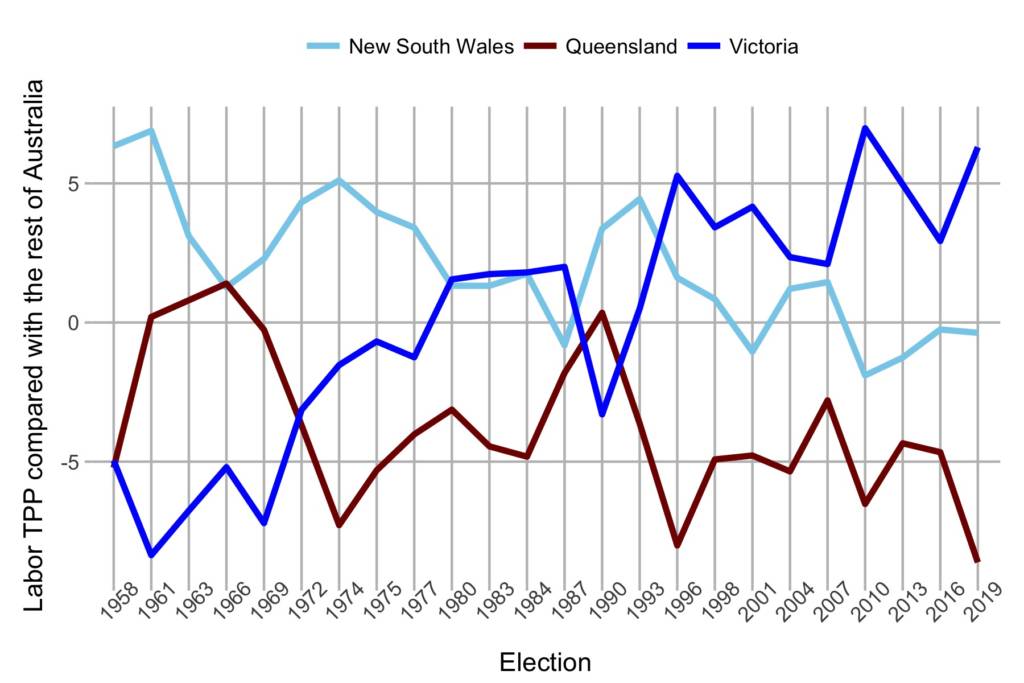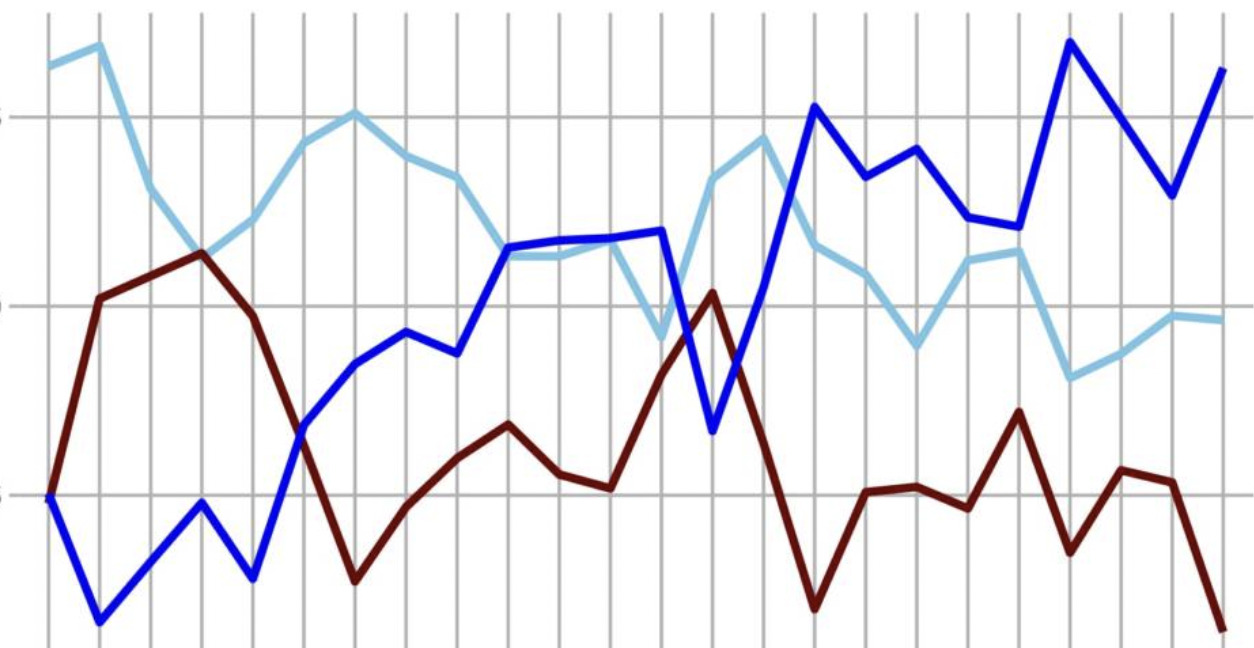This post draws on analysis in my chapter in Morrison’s Miracle, a forthcoming book from ANU Press and Academy of the Social Sciences in Australia about the 2019 federal election.
The Coalition gained an overall swing towards them at the 2019 federal election but it wasn’t a consistent story across the country.
There were swings back towards Labor in wealthier areas while the Coalition gained ground in areas with lower income. This trend was seen in every state, and often manifested itself within individual electorates.
But today I wanted to focus on the swings at the state level. Labor gained a swing towards them in Victoria and the ACT, while the Coalition gained swings elsewhere. In most places the Coalition swing was small, but it was much larger in Queensland.
This is the latest chapter in a long-running trend whereby Queensland has become stronger for conservatives, New South Wales has drifted towards the national median, and Victoria has become a stronghold for progressives.

This chart shows how the three largest states’ two-party-preferred votes for Labor have changed relative to the rest of the country since 1958.
Back in the 1950s, the Coalition performed most strongly in Victoria while New South Wales was best for Labor. Queensland lay somewhere in between.
Queensland became much stronger for the Coalition in the 1970s and with a few exceptions has largely stayed there, although 2019 was the worst relative result for Labor over this 61-year period.
Victoria has gradually trended towards Labor, with Labor first overperforming there in 1980. Labor has done much better in Victoria compared to the rest of Australia since John Howard’s prime ministership, and the gap in 2019 was the second-biggest for Labor in Victoria on record (the biggest was in 2010).
Meanwhile New South Wales lies somewhere in the middle, with its last hurrah as a strongly pro-Labor state taking place in the early 1990s.
Thanks to Antony Green for the historical data I used for this analysis in my book chapter.




Ben
The really big question is whether the result IN 2019, was a trend, or a one off result ? Will the revolt against the ALP in QLD, be sustained, subside , or intensify ? Likewise the move towards the ALP in (formerly !?) safe lib seats. Where will this new polarisation go ?. I can’t think of a more unpredictable time in politics.
cheers WD
The ALP`s 2CP vote in Victoria (and a lesser extent Queensland) was of course much lower in between 1955 and the early 1970s because of the DLP taking many people who would otherwise have voted ALP and sending their preferences to the Coalition.
Queensland and to a lesser extent seem to be more socially conservative, with the ALP becoming less socially conservative over time but also particularly sharply under Whitlam, swinging votes away from the ALP.
Tom quite correct . As an ex DLP candidate
In 1970’s I never once considered preferencing ALP by 2010 my HTV card preferenced ALP.
Whilst ALP moral policies are degrading to humanity LNP has moved away from Deakenite Compromiseand Menzies middle road economic policies and have become market mechanism worshippers. Liberals can not count on my preferences today.
Comments are closed.